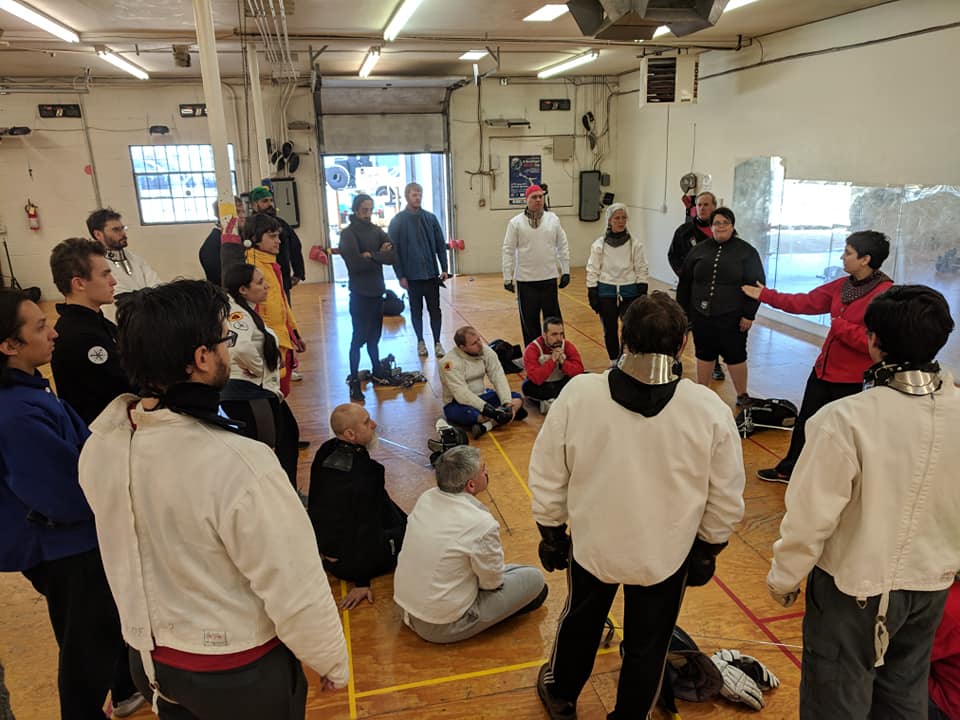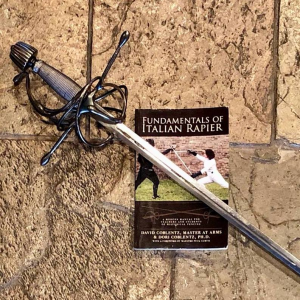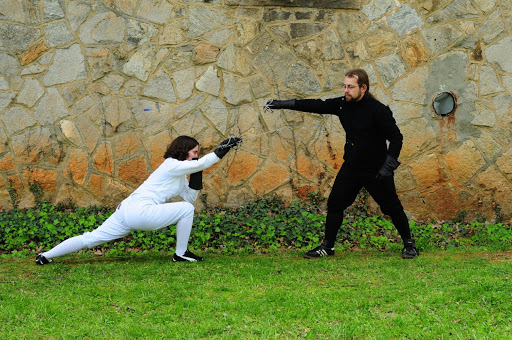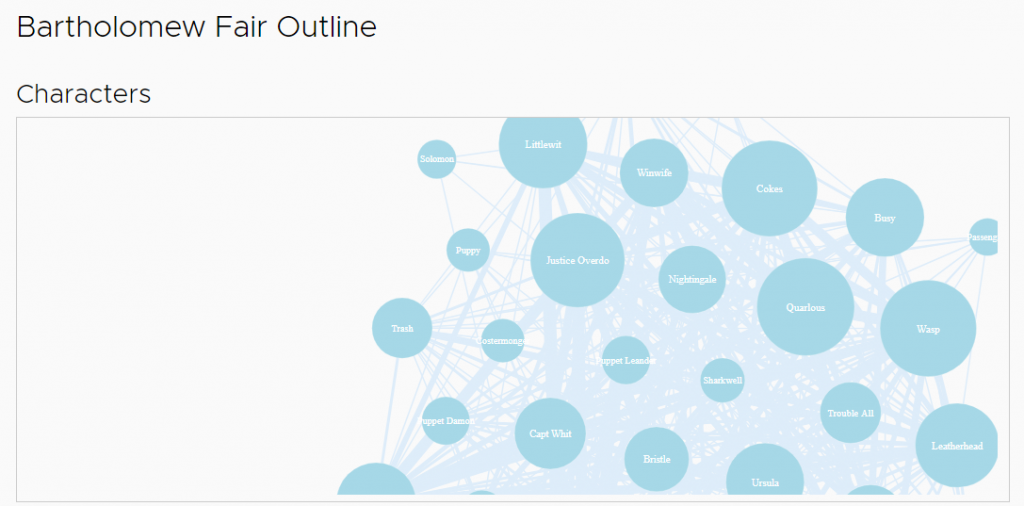This is the fifth part in a series on the intersections of technical communication in the tech industry and the academy. Read the series introduction here.

Dori Coblentz lecturing on fencing rapier
As former Brittain Fellow Kate Holterhoff has detailed in this post on her move from teaching to software development (and as my own career path demonstrates) the tech world has a certain draw for many humanities academics. While the state of the academic job market in English has encouraged many of us to explore new fields, tech seems to be a venue in which our training and expertise position us for potential career paths that are both interesting and sustainable.
In order to better understand some of the paths that my humanities colleagues are taking to tech fields, I recently sat down with Dori Coblentz, who will be making her own tech-related career move this coming fall when she shifts from teaching first year composition (FYC) to teaching technical communication in Georgia Tech’s Computer Science Junior Design course sequence. Dori is currently a second-year Brittain Fellow (and current chair of the WCP Grant Writing Committee) with a Ph.D. in English from Emory University. Her research is on early modern English drama and pedagogy; she also holds a Provost at Arms certification in foil, epee, and saber fencing, with a historical concentration in Italian rapier.

The cover of Fundamentals of Italian Rapier: A Modern Manual for Teachers and Students of Historical Fencing (2018) by David Coblentz & Dori Coblentz
KellyAnn Fitzpatrick: Next year you are teaching Georgia Tech’s Computer Science Technical Communication (CS Tech Comm) courses for the first time. What types of classes have you taught in the past?
Dori Coblentz: My teaching in the past has been primarily on writing and literature. I teach the first year composition sequence at Georgia Tech, and at Emory I taught on Shakespeare as well as composition.
KF: What motivated you to switch to the CS Tech Comm sequence?
DC: I love to see the principles of rhetoric and composition applied to real life communicative situations, and I find the process of guiding students through a project’s life cycle to be exciting and satisfying. I already use group work in this way when I teach composition, but right now the amount of time I can spend teaching collaborative skills is limited because of all the other material I need to cover. I usually end up with only 3-4 weeks to dedicate to a group project assignment. It’s a great start, but I’m drawn to CS Tech Comm in large part because I want to see what students do given a client, the time, and the resources. To be honest, I’m also probably a little over-invested in punctuality and time management! I love incrementalizing and scheduling tasks and sharing that joy with my students.
KF: You recently wrote an excellent TechStyle article on Agile Composition. What prompted you to introduce these methods into your FYC courses?
DC: In my composition classes I’ve been drawn to the problem of group work. How can I structure and assess team assignments in a way that maximizes fairness and efficiency? As an instructor, are there more steps I can take to help students make public-facing group projects that they can be proud of and feel good about? These questions led me to the Agile philosophy of software development. I’ve implemented a number of Agile practices in assignment sequences such as making class time for frequent brief team meetings, retrospectives, and identifying and scheduling tasks.
KF: How do you see these methods translating to CS Tech Comm?
DC: With the switch to CS Tech Comm, I see even more opportunities to explore group dynamics and the interplay between creating and communicating. In particular, I foresee the longer project life cycle as making the value of retrospectives and planning sessions visible to students.
KF: How do you see the relationship between the CS Tech Comm course sequence and the tech industry (for you and/or your students)?
DC: I see the relationship as mutually beneficial in several key ways. For the tech industry, it gives the opportunity to shape and develop the next generation of the workforce. For me and my students, it gives a real live audience to write for. The idea of audience is one of the single most important facets of communication, whether it’s in the technical communication classroom or the composition classroom. Working directly with clients in the tech industry breathes life into a project in large part because you know there’s a human on the other end.
KF: Do you have any project ideas?
DC: I’d love to expand some work I’ve been doing on a pedagogical resource for students of Ben Jonson’s Bartholomew Fair. It’s an amazing play for a number of reasons, but it is not taught that often in comparison to other plays by Jonson like Volpone. So far I’ve teamed up with students from FYC to generate content and with a UI developer to make an interface for this project, but it’s got a long ways to go. If you’re interested, you can see more about it here.
KF: You also teach and have published on fencing. Are there any lessons from fencing that might translate into the tech comm space (academic or professional)?
DC: Yes! Fencing really makes you pay attention to the tempo of interpersonal interactions. This translates to meetings, to the classrooms, and to all sorts of other rhetorical situations. Pedagogically speaking, students need many of the same things in a fencing lesson as they do in a literature or composition class: a chance to warm up and transition into class, time doing technical skill-building drills, and time in freeplay, or bouting. This final element really tests the efficacy of whatever else you are doing because it gives you a situation that is closest to “the strip,” or competition. I see what we do with project-based learning in the CS Tech Comm sequence in the same way. Adding an element of controlled chaos with public-facing, external clients gives students the vital opportunity to put the principles they’ve been internalizing throughout their time at Georgia Tech into practice.

Provost at Arms Dori Coblentz fences with Master at Arms David Coblentz
KF: Thank you so much for taking the time to talk tech comm (and fencing!) with me today; I can’t wait to see what you do with the CS Tech Comm classes.
DC: You’re very welcome! It’s been a pleasure.
You can read more about Dori’s research, teaching, and fencing pursuits on her website at http://www.doricoblentz.com/.
Note: A version of this article has also been published on KellyAnn’s RedMonk blog.

